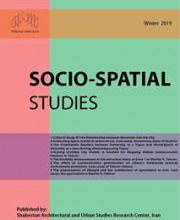Beauty business in Iran: Does beauty make you healthy?
حوزههای تخصصی:
The beauty industry in Iran has seen remarkable growth in recent years, fueled by deep-rooted cultural ideals surrounding physical appearance. Many Iranians, as idealists, strive to meet high standards of beauty, a pursuit that has led to the booming of various beauty industries, including cosmetics, skincare, and plastic surgery. While the desire to look beautiful is often associated with social acceptance and personal confidence, the pursuit of beauty in Iran also has significant health consequences. Drawing on a review of existing literature, industry reports, and cultural studies, the study explores how beauty standards in Iran influence individual health, both physically and psychologically. Our results show that the pressures to conform to societal beauty standards can lead to an obsession with appearance, which, in turn, may result in mental health challenges such as anxiety, body dysmorphia, and depression. This article argues that while the beauty business thrives on society's idealistic vision of attractiveness, it comes at a cost. The commodification of beauty has not only reshaped cultural values but also introduced health risks that must be critically assessed.
